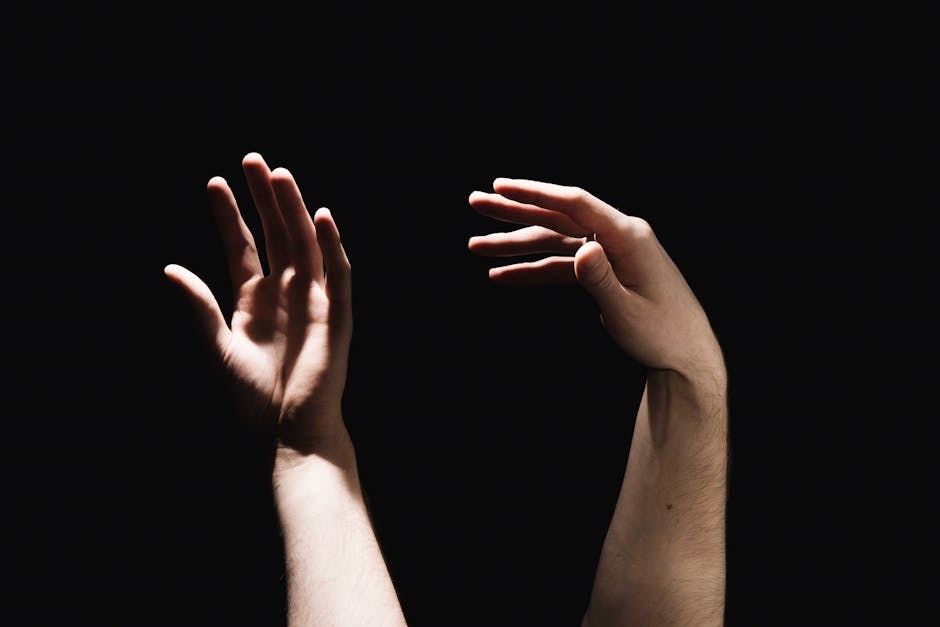Ask a room full of people why men seem transfixed by women and you’ll hear a chorus of conflicting answers-some playful, some blunt, some evasive. Beneath the jokes and half-answers sits a simple truth: attention gravitates toward shape, motion, voice, and presence, with women’s curves often acting as the first visual hook. This doesn’t mean every man notices the same thing or for the same reason. It means that in ordinary moments-on a sidewalk, in a store, across a noisy room-certain cues tend to rise above the commotion and nudge the mind, sometimes before words have a chance to form.
Reframing the Question: Attraction and Attention
When a striking figure passes by, the brain makes a snap appraisal-part instinct, part memory, part mood. You don’t need a lecture to recognize the pull; you feel it. For many men, women’s curves are the first cue in that quick mental scan, a shorthand that bundles together ideas of vitality, maturity, and aesthetic balance. The response is not always dignified, and it certainly isn’t always welcome, but the pattern is familiar: eyes flick, posture adjusts, thoughts drift.
That response is not a command to behave poorly; it’s simply a description of how attention gets captured. Respect is still nonnegotiable. The look that lingers can be appreciative rather than intrusive-an inward acknowledgment that women’s curves, posture, and gait carry a kind of visual rhythm that stands out the way a melody does in a crowded bar. Seeing the rhythm doesn’t entitle anyone to anything; it just explains why the moment feels so absorbing.

Patterns in What Catches the Eye
Across art, stories, and casual talk, a consistent motif pops up: the dramatic outline that narrows, arcs, and widens in a visually balanced way. Call it the classic silhouette, the hourglass, or simply strong lines-whatever the label, women’s curves create contrast and proportion that the eye reads as striking. Old descriptions of beauty heap praise on a slender midsection and a harmonious outline, not because everyone is chasing the same mold, but because that contrast registers quickly and memorably.
It helps that the human eye loves symmetry and flow. When the waist tapers and the frame flares, the whole figure appears dynamic even when standing still. That feeling of motion-in-rest draws attention the way a painter uses light to guide the viewer across a canvas. Women’s curves function like those highlights-organizing the gaze, setting a tempo, and making it easier to perceive the person as a unified whole rather than a jumble of parts.
None of this erases individuality. Some men notice a measured stride more than shape, or a luminous face more than outline. But even when other features dominate, women’s curves often play rhythm section to the solo-keeping time, shaping expectations, and giving the eye a path to follow.

A Plain-Language Take on Evolution
Set aside technical jargon and think in everyday terms: living things keep what works. Over long stretches of time, signals that help beings find one another tend to stick around. It makes sense, then, that physical signs of maturity and health would be easy to spot and hard to ignore. In many minds, women’s curves carry that implication-maturity reached, body balanced, energy to spare-even if people don’t talk about it that way.
Another piece of the puzzle is timing. Humans don’t advertise fertility on a schedule anyone can see at a glance, so attention learned to look for broader cues that suggest availability for connection, partnership, and family life. That doesn’t mean every glance is a calculus about children; it means the brain built shortcuts. Women’s curves became one of those shortcuts-an everyday indicator that sits near the surface of awareness and colors the first impression.
Of course, real lives don’t unfold like biology textbooks. Personal taste, culture, and experience shape what anyone finds appealing. Still, the idea that the eye scans for visual signs of maturity and balance helps explain why women’s curves routinely headline the list of what gets noticed first.

Features That Commonly Stand Out
Ask people to name specifics and you’ll get lively lists. They won’t all match, but you’ll hear repeating themes. Here are common notes in that chorus, not as rigid rules but as observations drawn from everyday conversation.
- Breasts – A visible sign of having moved beyond childhood, breasts frame the torso and alter the silhouette in a way that’s hard to miss. They change how clothing drapes and how motion looks from a distance. For many observers, they’re a central part of women’s curves, not for what they promise, but for how they create shape and soften lines.
- Hips and butt – The widening of the pelvis and the fullness of the backside shift the body’s center of gravity and change how a person stands and walks. That shift amplifies sway and balance, drawing the eye to women’s curves in motion. The result is not only a look; it’s a cadence-a sense that movement has a natural beat.
- Waist and lower back – A defined midsection provides contrast to the upper and lower body, creating the visual “pinch” that artists emphasize when sketching a graceful stance. Many people are especially taken with the lower back-those small dimples or that subtle hollow-which quietly highlight women’s curves without shouting for attention.
- Legs – Length, tone, and the way steps land can dominate an impression. Even when fabric hides much of the outline, a measured stride telegraphs energy and confidence. Legs act like arrows pointing back to the hips, keeping women’s curves at the center of the visual story.
- Face and skin – Expression anchors everything. A bright gaze, an easy smile, and clear, healthy skin can override other details and set the tone for how a person is perceived. When the face invites attention, the rest of the figure-including women’s curves-reads as part of one coherent presence.
- Movement and posture – How someone carries themselves can be as compelling as any single feature. A relaxed spine, shoulders that open rather than cave, and steps that float rather than stomp-these choices frame women’s curves the way a good stage frames a dancer.
- Style and presentation – Fabrics, cuts, and colors highlight or downplay different lines. A well-chosen outfit doesn’t create shape from nothing; it directs existing shape so that women’s curves feel intentional rather than incidental. Even subtle tailoring can turn a glance into a second look.
Everyday Scenes, Everyday Reactions
Picture a crosswalk just before the signal changes. Someone crosses with calm assurance, spine tall, stride loose, coat cinched at the waist. Heads turn, not because a crowd decided to misbehave, but because the scene briefly aligned-motion, outline, and presence playing the same note. Women’s curves help tune that note. Nobody scheduled the moment; it arrived, resonated, and faded like a chord struck on a piano.
This phenomenon recurs in stores, gyms, offices, stations-anywhere people move and mingle. The context shifts, but a throughline remains: contrast, flow, and pacing organize the gaze. That’s one reason the same person can appear merely interesting in one setting and absolutely magnetic in another. Light, posture, and mood reframe women’s curves, and the eye responds accordingly.
How Social Learning Shapes the Lens
No one arrives at adulthood with a blank slate. Family, friends, films, and music stock the mind with templates for what “attractive” looks and sounds like. If a culture celebrates a certain silhouette, viewers begin to spot it everywhere-confirmation bias in action. Over time, women’s curves that match the favored template get extra emphasis, while other forms of beauty wait in the wings until someone learns to notice them, too.
Scents, voices, and names also matter. A warm timbre can be as arresting as a striking outline; a familiar perfume can summon memories that intensify a glance. Even when other cues take the lead, women’s curves keep time in the background-an anchoring rhythm that makes the rest of the impression hang together.
The Chase, Revisited
Many people enjoy the slow advance from interest to connection-the jokes, the hesitations, the small tests of attention and care. In that dance, looks may spark the match, but the flame keeps burning only if character, humor, and kindness feed it. Women’s curves can frame the opening scene, yet the plot survives on conversation and mutual regard. The pursuit, when done with respect, is less a contest and more a steady exchange-signals given, signals received, and a shared decision to keep talking.
This perspective rebalances a dynamic that’s often misread. Attraction may begin with a glance, but the next steps require consent, patience, and curiosity. Anyone can notice; not everyone can listen. When attention matures, women’s curves remain part of the appeal without being the whole story.
Competition and Comparison Without the Drama
It’s easy to imagine a modern arena packed with rivals, each trying to stand out. Gyms fill, tutorials promise quick fixes, and advice columns tell readers how to become their “best selves.” In that swirl, men can feel pressure to impress and to keep scanning for an ideal they fear they’ll miss. Women’s curves, frequently spotlighted by fashion and media, become a navigational landmark-familiar, reassuring, and instantly legible.
Yet there’s a quieter lesson available: put less energy into chasing a perfect image and more into being alert, decent, and grounded. The more present someone is, the less frantic the search feels. Attraction still notices women’s curves-how could it not?-but the gaze grows steadier, more discerning, and more attuned to the person wearing the silhouette.
Learning to Notice More, Not Less
Attention is trainable. If you practice seeing posture, you’ll start to notice how confidence changes a room. If you practice hearing laughter, you’ll spot the difference between polite chuckles and genuine mirth. In the same way, if you practice seeing the whole person, women’s curves enrich the picture rather than eclipse it. The outline that once monopolized the moment becomes part of a fuller, friendlier view.
This doesn’t deny the charge that first impressions carry-far from it. It simply enlarges the frame. The result is paradoxical: appreciating women’s curves more precisely, you also become less ruled by them. You can admire the line of a coat or the ease of a stride and still pay attention to the story someone tells about their day.
Respect as a Baseline
None of the above grants a pass for boorish behavior. Staring until someone shrinks, following without invitation, commenting as if a public street were a stage-these acts break the social contract. Complexity is not an excuse to ignore boundaries. The sane middle is obvious once you see it: recognize what your mind finds striking-often women’s curves-and choose to behave in a way that leaves everyone’s dignity intact.
That approach is practical, not prissy. It keeps everyday life civil and keeps admiration from curdling into entitlement. It also makes it easier to be honest about what draws the eye without pretending you’re a robot immune to shape and sway.
Putting the Pieces Together
So, why the persistent pull? Because certain cues fire quickly, because practice teaches the eye what to value, and because rhythm and outline are inherently pleasing. Women’s curves collect many of those cues in one place-contrast, balance, motion-so they become the symbol most people reach for when asked to explain that moment of stunned attention. The symbol isn’t the whole story, but it’s a faithful sketch of where the story often starts.
Over time, the opening sketch grows into a richer portrait. Names stick, voices resonate, kindness leaves a mark. The same figure that once seemed purely visual now carries memories and meanings. Women’s curves are still there-constant, familiar-but the mind associates them with scenes, jokes, and shared milestones. The outline holds, the person deepens.
A Different Kind of Final Word
If you’ve ever felt your thoughts skid when someone with a graceful silhouette walks past, you’re not alone. You encountered a bundle of cues arranged in a way the eye loves. Women’s curves made the introduction, and for a second the world hushed. What happens next is up to character, timing, and respect. That’s the true arc: a glance becomes a conversation, a conversation becomes a bond, and the features that first caught your eye become part of a much larger, warmer picture.
Put simply, the mind notices what’s easy to notice-shape, motion, symmetry-and then, when given the chance, it notices what matters more. Women’s curves play their part brilliantly, announcing presence with style. But it’s the person-the stories they tell, the humor they share, the way they move through a room-who turns a passing moment into something you’re glad you didn’t miss.